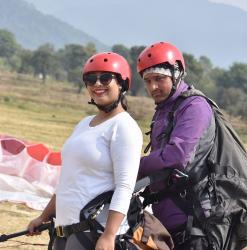Since India is a vast country, it makes it difficult to decide what to see in India. The country is so rich and diverse and has some excellent specimens of history in the form of monuments. However, India not only has great man-made monuments but also some natural heritage sites dating back to the time of early cavemen. We know how hard it is to search for all those places that you must visit in India in order to understand its history better, which is why we thought of compiling a list on your behalf.
Check out: India Heritage Sightseeing Tour Packages
Here is our list of the top monuments in India that are absolutely a must visit:
| Taj Mahal Agra |
Gateway of India Mumbai |
India Gate New Delhi |
| Golden Temple Amritsar |
Hawa Mahal Jaipur |
Charminar Hyderabad |
| Meenakshi Temple |
Agra Fort |
City Palace Udaipur |
| Victoria Memorial Kolkata |
Khajuraho Temples |
Ajanta & Ellora Caves |
| Amer Fort Jaipur |
Lotus Temple |
Basilica of Bom Jesu |
| Qutub Minar |
Bara Imambara Lucknow |
Brihadisvara Temple |
| Dilwara Temples |
Sanchi Stupa |
Elephanta Caves |
| Fatehpur Sikri |
Gingee Fort Villupuram |
Golconda Fort Hyderabad |
| Hampi |
Gwalior Fort |
Pattadakal |
| Mahabalipuram |
Hill Palace Museum |
Jaisalmer Fort |
| Jama Masjid Delhi |
Jantar Mantar Jaipur |
Kamakhya Temple |
| Kashi Vishwanath |
Key Monastery Spiti Valley |
Humayun’s Tomb |
| Mahabodhi Temple |
Mehrangarh Fort Jodhpur |
Mysore Palace |
| Nalanda |
Purana Qila |
Rashtrapati Bhawan |
| Red Fort |
Bhimbetka |
Se Cathedral Goa |
| Sikandra Agra |
Shivaji Terminus |
Sun Temple Konark |
Recommended Tour Packages
Taj Mahal Agra, Uttar Pradesh
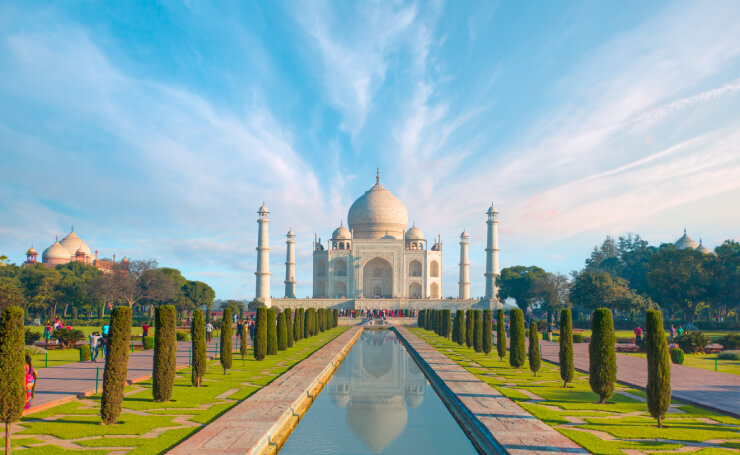
This monument is undoubtedly the face of India. Built in white marble, this architecture masterpiece is also enlisted in the Seven Wonders of the World. From world leaders to movie stars from eminent writers to business moguls everybody have Taj Mahal in their bucket list of places to see in the world.
Completed in 1648, Taj Mahal has remained an important historic monument for India; its beautiful architecture is most spoken about and the heart melting story behind its construction truly incites an urge to visit the Epitome of Love.
Highlight: Enlisted in the Seven Wonders of the World, Reckoned as the Epitome of Love
Other Interesting Blog to Read
Gateway of India Mumbai, Maharashtra
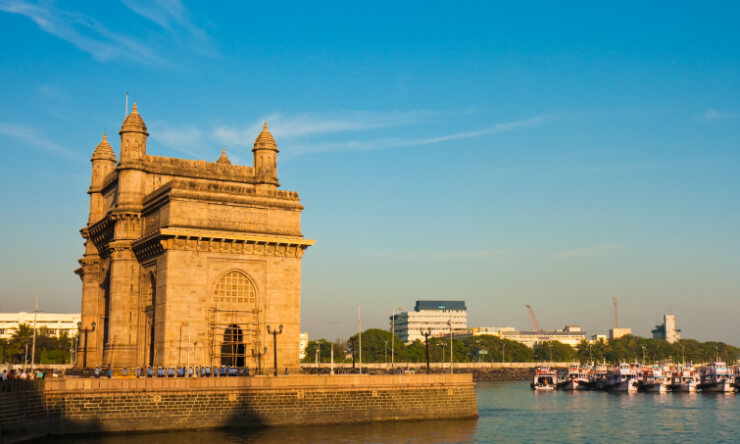
Built to commemorate royal visit of King George V, Gateway of India has stayed an inseparable historic symbol for the city of Mumbai and the country. This bold basalt arch that symbolizes colonial triumph is now amongst the popular tourist places to visit in Mumbai.
Completed in 1924 and done in Islamic styles of 16th-century Gujarat architecture, this piece of art was also the witness to India’s march towards independence and the mishap of 26/11.
Highlight: The last horde of British troops left India through this Gateway
Check out: Popular Tourist Attractions in Mumbai
India Gate, New Delhi
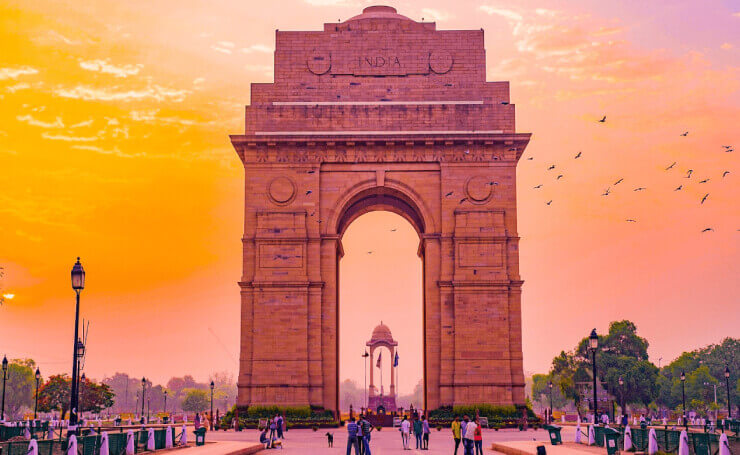
India Gate is without a doubt one of the most recognizable structures of the country. Often referred as the replica of Arc de Triomphe in Paris, this majestic monument is dedicated to those 70,000 soldiers who lost their lives during World War I.
Completed in 1931; India Gate stands 42m tall in height with name of the Indian martyrs carved on it. The Amar Jawan Jyoti is a much later addition to the structure, which was created after 1971’s Indo-Pak war. Today, India Gate is amongst the most famous monuments in Delhi and India.
Highlight: Parades on Independence Day and Republic Day
Check out: Popular Heritage Sightseeing Places in Delhi
Golden Temple Amritsar, Punjab
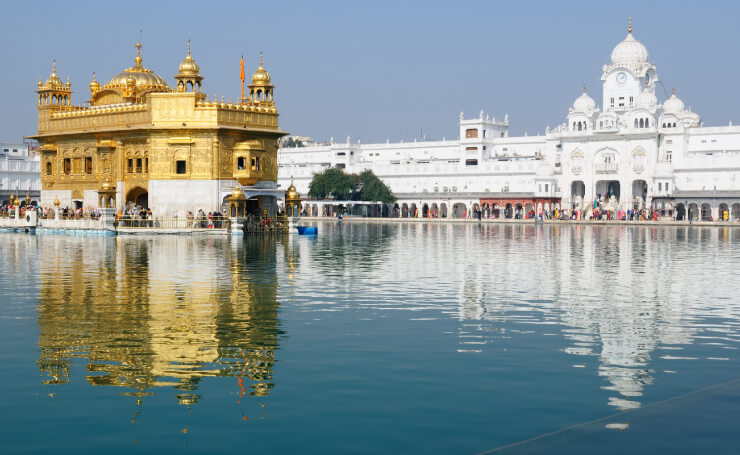
Rich history and gold gilded exterior are the highlights of Golden Temple in Amritsar. Sikhs from all over the world come to pay obeisance at Golden Temple and thus this place has gained a great importance in India’s tourism. Built by Arjan Sahib with help of Baba Budha Ji, this Sikh shrine is done in Indo-Islamic architecture style.
The temple is actually a small part of a religious complex, which also has a famous pond that is said to have healing power. The lower level of the temple is adorned with motifs of flowers and animal like that of Taj Mahal and the upper level is gilded with sheets of gold, giving it a look that earned it a name as Golden temple.
Highlight: Surrounding pond that is believed to have healing powers
Other Interesting Blog to Read
Hawa Mahal Jaipur, Rajasthan
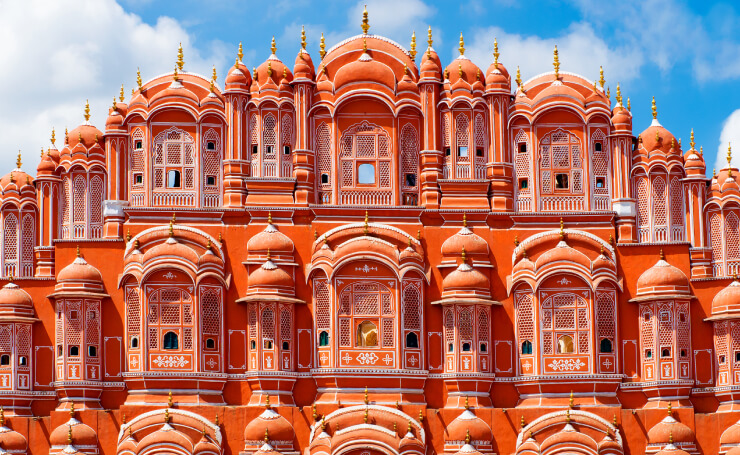
This Palace of Winds is a prominent landmark of Pink City, Jaipur. A five-storey pyramidal building, Hawa Mahal stands 15m tall and overlooks the busy streets of the city. The monument was built Maharaja Sawai Pratap Singh to offer convenience to women to see the outside world without having to be seen by the other (Purdah System was prevalent at that time). From the top of the palace are the stunning views of Jantar Mantar, City Palace and Sireh Deori Bazaar.
Highlight: The ventilation system is one of its kind
Other Interesting Blog to Read
Charminar Hyderabad, Telangana
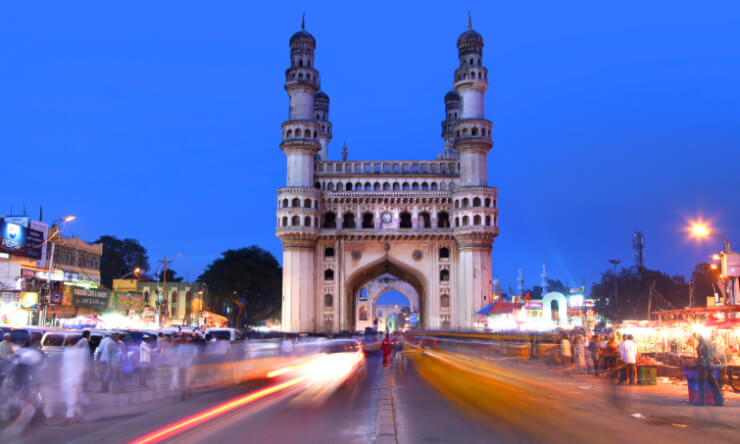
This 16th century monument in Hyderabad has been the clear winner of being one of the most famous landmarks in India. Standing tall in the Old Hyderabad, Charminar looks absolutely stunning when lit in the evening.
There are winding 149 steps that lead to the top of building from where the view is spectacular. Charminar is indeed a gift to the City of Nizams by Sultan Muhammad Quli Qutb Shah.
Highlight: View from the top
Other Interesting Blog to Read
Meenakshi Temple Madurai, Tamil Nadu
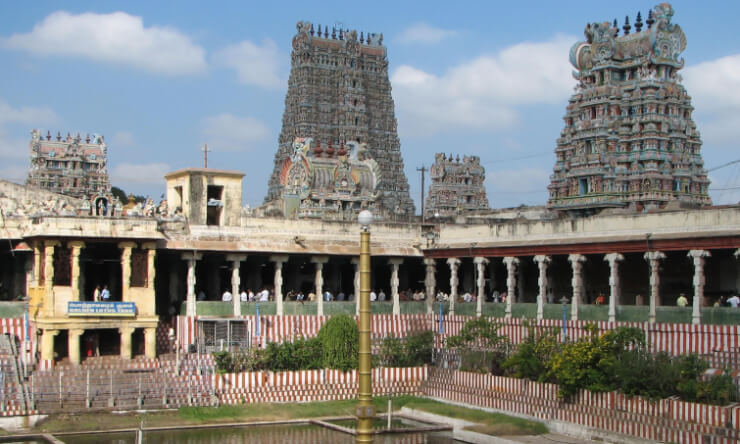
Said to have the finest Indian architecture, Meenakshi Temple is situated on the bank of Vaigai River in the temple city Madurai. The temple is probably the most famous edifice in South India and is visited by both devotees and architecture lovers throughout the year.
The shrine is believed to house 33,000 sculptures in its 14 gopurams, which definitely makes an unprecedented scene.
Highlight: The oldest gopuram here dates back to 13th century AD
Check out: Top Tourism Attractions in Madurai
Agra Fort, Uttar Pradesh
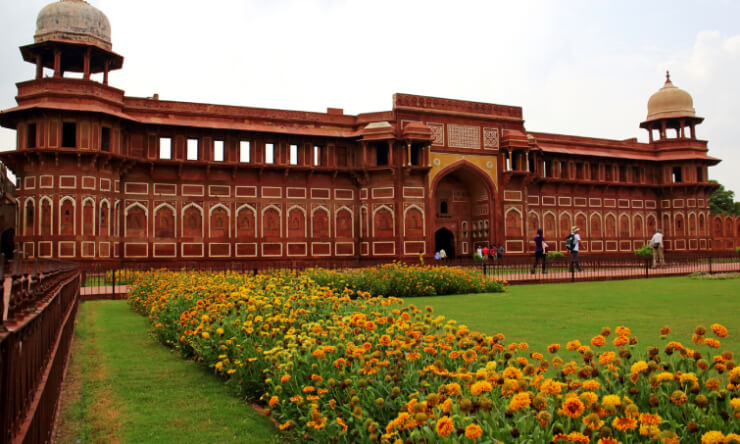
As one approaches towards Taj Mahal, en route the red sandstone fortifying wall shall draw your attention. Agra Fort built by Emperor Akbar is the second most popular monument in Agra. It was during the time of Shah Jahan that this fort was converted to a palave and later in the reign of Aurangzed the fort turned into a gilded prison.
The fort is like the city inside a city and has some fine architectural specimen to observe. This fort is said to be the symbol of power, strength and resilience. Standing in its full glory, Agra Fort boasts of a rich historic period and uncountable events that are important in Indian history.
Highlight: Diwam-i-Khas, Jahangiri Palace, Akbari Mahal
Check out: Top Tourist Destinations in Uttar Pradesh
City Palace Udaipur, Rajasthan
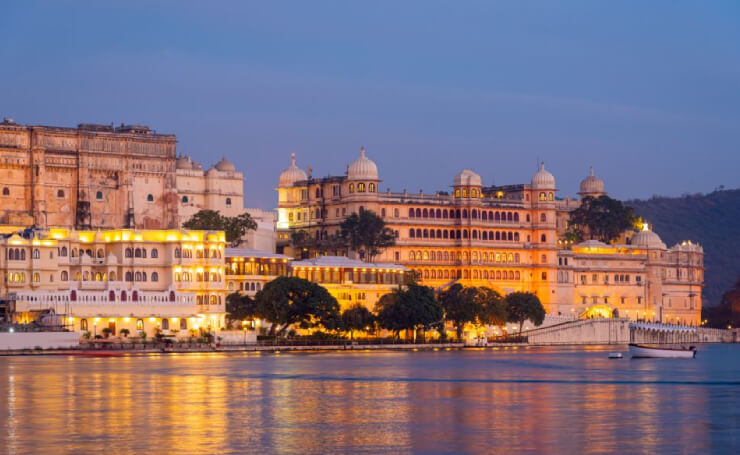
One of the most prominent buildings of Udaipur, City Palace is the reflection of excellent Rajput architecture. Completed over a period of 400 years, this palace sits on the bank of Lake Pichola overlooking the vista of the city.
The palace is a complex that 11 other palaces built inside it. It is the perfect place to appreciate Rajput’s taste of architecture. From intricate designs to the choice of mirror and marble-work, each has a distinct taste which definitely sets this place class apart.
Highlight: Amar Vilas and its hanging Garden
Other Interesting Blog to Read
Victoria Memorial Kolkata, West Bengal
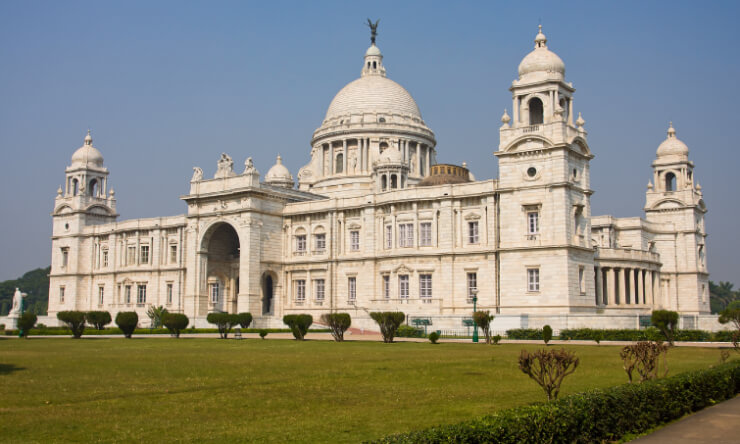
Clearly the most famous building in Kolkata, Victoria Memorial is situated on the bank of Hooghly River. Built to commemorate Queen Victoria, today this building is an acknowledged museum under Ministry of Culture.
Exhibiting an extensive collection of colonial era remnants in its even-handed done up halls, this place holds a decent place in the history as well as beauty of Kolkata.
Highlight: The Victoria Memorial has the largest single collection of the works of Thomas Daniell (1749–1840) and his nephew, William Daniell (1769–1837) and the Angel of Victory over the central dome
Check out: West Bengal Tourism Guide
Khajuraho Group of Monuments, Madhya Pradesh
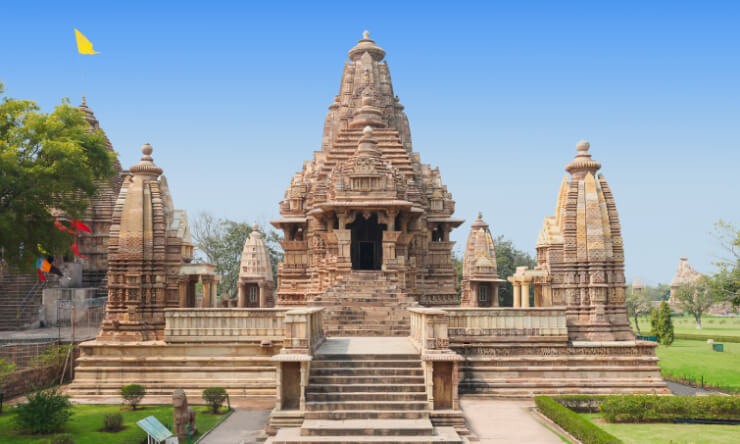
Most famous for its erotic sculptures, the Khajuraho Group of Monuments is one of the most visited destinations in India. Built by the Chandela rulers in 10th and 11th century AD, these groups of temples are truly a site to cherish.
These widely acclaimed temples demonstrate a wide range of sculptures including the erotic ones. Belonging to both Hindu and Jain religion, the temples are the fine example of architectural excellence in the country.
Highlight: Western Group of Temples, Kandariya Mahadeva Temple
Check out: Madhya Pradesh Tourism Guide
Ajanta & Ellora Caves Aurangabad, Maharashtra
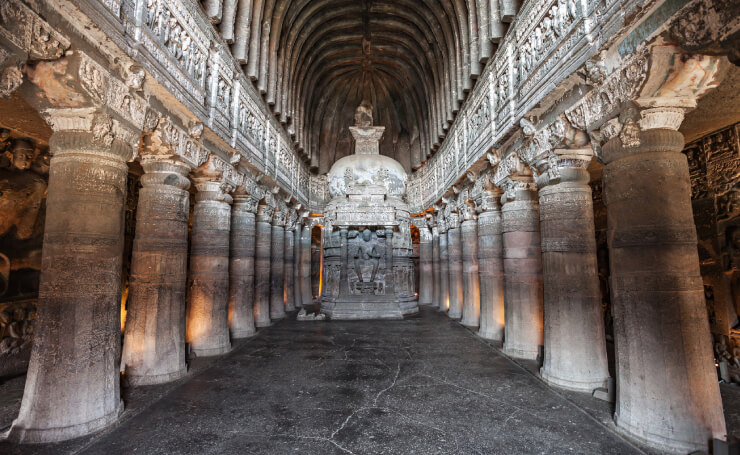
One of the most attention-grabbing places in India would be Ajanta and Ellora Caves. Dating back to 2nd century BC, these caves are the reflection of the lifestyle of early man in the country. These rock-cut caves boast rich sculptures and wall paintings.
Ajanta Caves can mostly be referred as the Buddhist caves whereas Ellora Caves can be called Hindu, Jain and Buddhist caves. Ajanta & Ellora Caves are amongst one of the most well-preserved monuments in India.
Highlight: Reclining Buddha (Ajantacave no.26), Kailasanatha Temple (Ellora Cave no. 19)
Check out: Maharashtra Travel Guide
Amer Fort Jaipur, Rajasthan
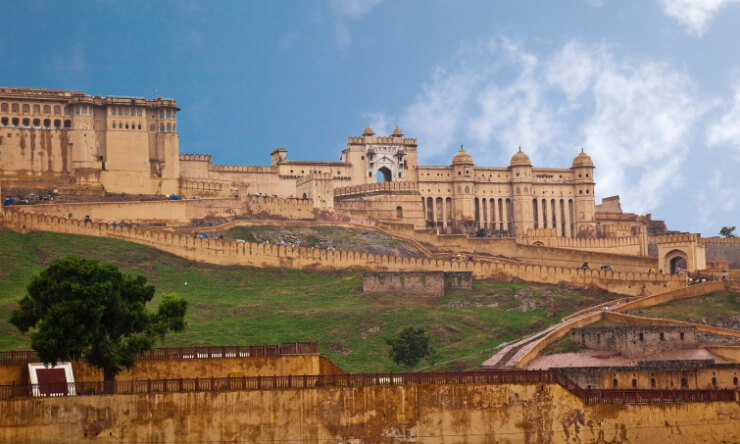
This fort is the finest example of Rajput architecture in Rajasthan. Perched on a hillock, Amer Fort is a beautifully made fort complex that comprises of palaces, temples and courtyard. Done with intricate lattice work, fine embossing and mirror work, Amer Fort is a visual treat to the visitors. The fort is the perfect reflection of the rich history of Rajput rulers.
Highlight: Sheesh Mahal, Ganesh Pol and Maota Lake
Check out: Rajasthan Travel Guide
Bahai Temple (Lotus Temple), New Delhi
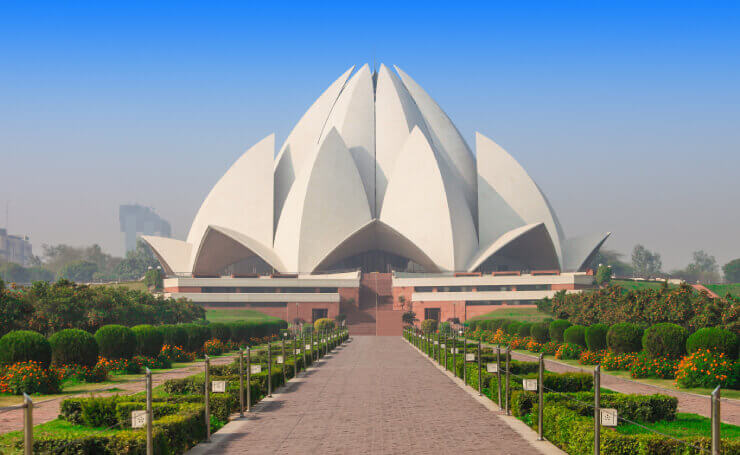
Popularly known as Lotus Temple, Bahai Temple is the ideal example of modern architecture in India. The lotus-shaped temple is the holy centre for the Bahai sect, however a large number of tourists come to visit it every day. The temple has also been awarded many a time for its unique architecture and has been featured in several magazines and newspapers.
The shrine composes of 27 free-standing petal-shaped marbles arranged in clusters of three to form nine sides. The nine doors of the Lotus Temple open to 40 metres tall centre hall that is capable of holding up to 2,500 people.
Highlight: Lotus-like Shape
Other Interesting Blog to Read
Basilica of Bom Jesus, Goa
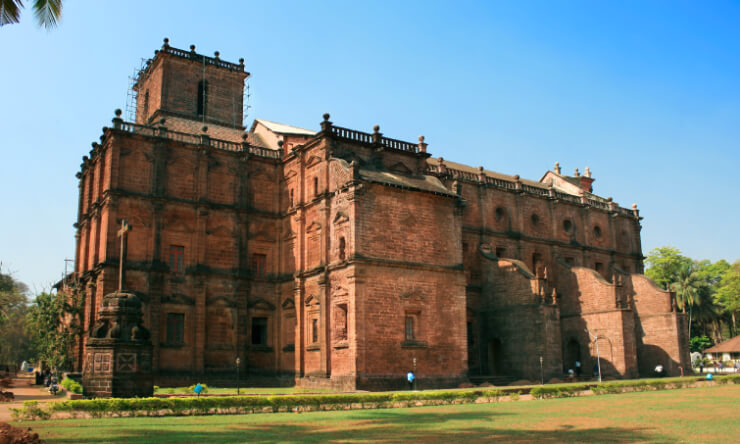
Holding the mortal remains of St Francis Xavier, Basilica of Bom Jesus is the most famous structure in Goa. This 17th century Church is the reminiscence of Portuguese era in the country and boasts fine Baroque architecture.
This is said to be one of the oldest churches in Goa and the most popular one too. The Church sees a large number of visitors swarming up when the body of St. Francis Xavier is kept for public viewing once in 10 years.
Highlight: St.Francis Xavier Mortal Remains
Other Interesting Blog to Read
Qutub Minar and its Monuments, New Delhi
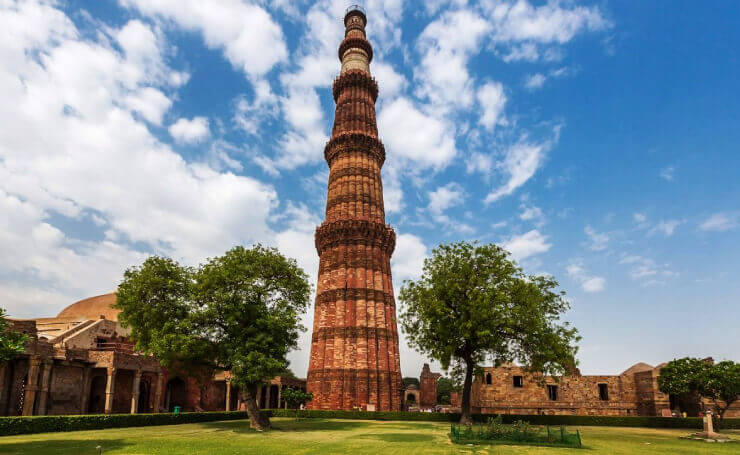
Built by Qutub-ud-Din Aibak, Qutub Minar is not only an important landmark of Delhi but it represents the rich architecture of India as well. This 73m high tower is majestic in size and is magnificent in view. The tower was built by Aibak after the last Hindu ruler was defeated and is reckoned to be built to celebrate the beginning of the Mughal rule in India.
At the foot of the tower is the Quwwat-ul-Islam Mosque, which is believed to be the first mosque to be built in India. The main mosque comprises of an inner and outer courtyard, which is decorated with shafts and surrounded by pillars. Most of these shafts are from the Hindu temples, which were destroyed to construct the mosque.
It is, therefore, not a surprise that the Muslim mosque has typical Hindu ornamentation. Close to the mosque is one of Delhi’s most famed antiques, the Iron Pillar.
Highlight: The Dizzying height of the Minaret
Check out: Delhi Tourism Guide
Bara Imambara Lucknow, Uttar Pradesh
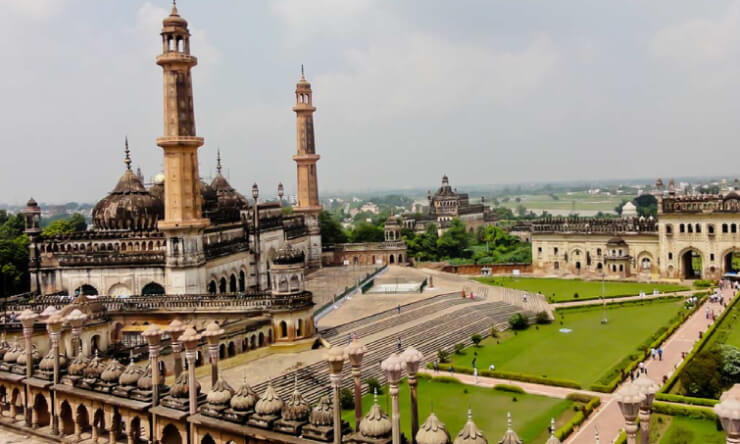
Built by fourth Nawab of Awadh known as Asaf-ud-Daula, Bara Imambara was built as a part of a relief project for a major famine that took place in the year 1784. The Bara Imambara of Lucknow is one of the most famous monuments of this place and is also called Asfi Imambara after the name of the Nawab of Lucknow.
It is an important place of worship for the Muslims who come here every year to celebrate the religious festival of Muharram.
Highlight: Bhubhulaiya (Maze)
Check out: Top Places to Visit in Lucknow Uttar Pradesh
Brihadisvara Temple at Thanjavur, Tamil Nadu
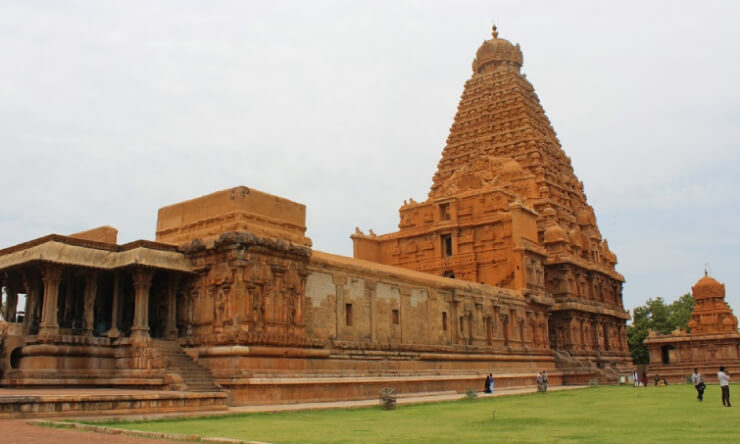
Brihadisvara is the grandest creation of the Chola Emperor Rajaraja. It was inaugurated in his 19th regal year (AD 1009-10) and is named after him as Rajesvara Peruvudaiyar. Architecturally, it is the most promising structure built in granite.
It has also been referred to as ‘landmark in the evolution of building art in South India’. The temple with its massive proportions and simple design is believed to have provided inspiration for future designs in constructions not only in south India but also in many parts of south-east Asia.
Highlight: Vimana
Also Read: Information About Religious Tourism in Kerala
Dilwara Temples, Rajasthan
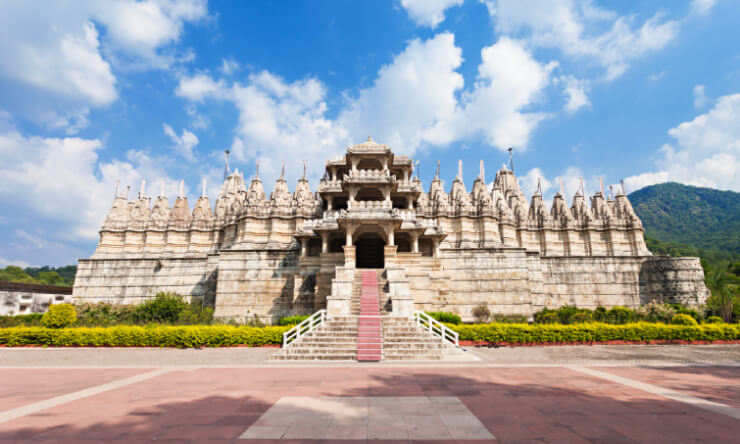
Dilwara Jain Temples is undoubtedly one of the finest Jain temples in India. It is known world over for its excellent architecture and marvelous marble stone carvings, some experts also consider it architecturally superior to the Taj Mahal.
Altough it may seem basic from outside but the temple interior showcases the extraordinary human craftsmanship. These temples were built between 11th to 13th centuries AD amidst the beautiful lush green hills.
Highlight: Shri Mahaveer Swami Temple, Shri ParshavNath Temple or Khartar Vasahi Temple. Shri AdiNath Temple or Vimal Vasahi Temple
Also Read: Ancient History of Rajasthan
Sanchi Stupa, Madhya Pradesh
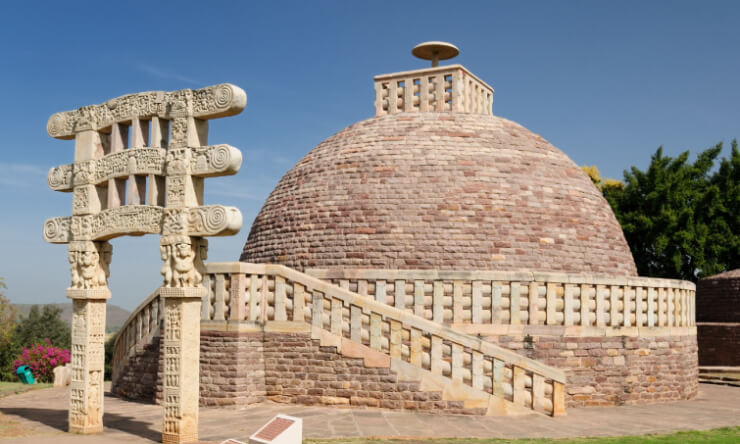
Sanchi has a distinction of having an incredible specimen of Buddhist art and architecture. Dating back to the early Mauryan period (third century BC to twelfth century AD), Sanchi is famous in the world for stupas, monolithic Ashokan pillar, temples, monasteries and sculptures.
It was Emperor Asoka who laid the foundations of a religious centre at Sanchi fascinated by the location of the hill and because of his Queen Devi was the daughter of a merchant of Vidisha. He erected the Great Stupa (Stupa 1) and kept the mortal remains of Buddha. Thereafter the period of redistribution of Buddha’s mortal remains in different Stupas came into practice.
Highlight: Main Stupa and the Museum
Check out: Madhya Pradesh All Inclusive Tourism Packages
Elephanta Caves Mumbai, Maharashtra
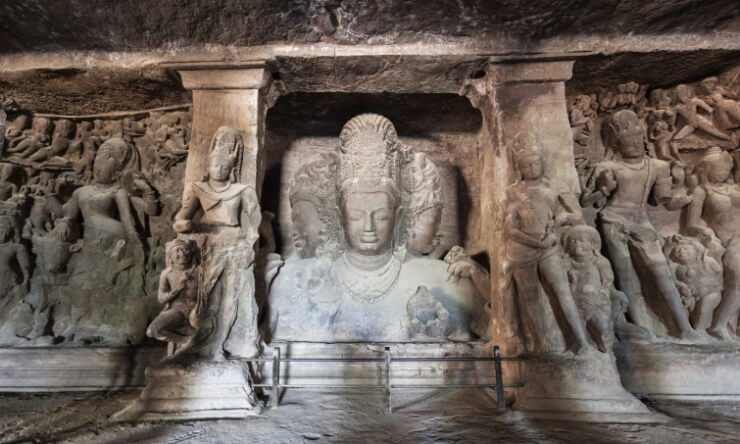
There are seven caves in the Elephanta group which date back circa to 6th – 7th centuries A.D. Among the cave excavations, Cave 1 is the most imposing one with the representation of the evolved Brahmanical rock-cut architecture. The cave is also famous for exquisite sculptures.
The Elephanta Caves are in Uran, district Raigad is located on island hills about 11 km north-east of the Apollo Bandar, Mumbai and 7 km from the shore of the mainland, approximately covering an area of 7 km. The island is named after a colossal elephant found in the island, which is popularly known as ‘Gharapuri’.
Highlight: Ardhanarisvara, Mahesh Murti
Other Interesting Blog to Read
Fatehpur Sikri Agra, Uttar Pradesh
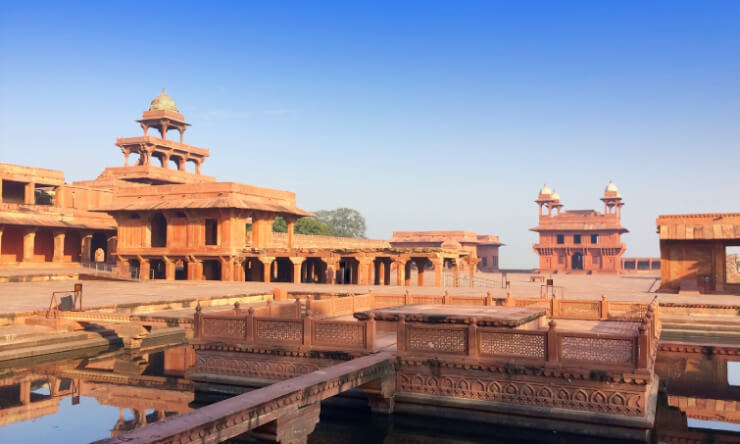
This massive fort is enlisted among the UNESCO World Heritage Sites and ranks among the top places visited in India. Situated at a short distance from the city of Agra in the state of Uttar Pradesh, Fatehpur Sikri is an excellent specimen of the Mughal dynasty.
T
Offering a feel of the rich historical culture of medieval Mughal India, this fort was once the capital of the Mughal Empire built by Emperor Akbar from the period of 1571 to 1585. The capital was later shifted to the city of Agra. There are several majestic buildings built by Akbar in Fatehpur Sikri.
Highlight: Buland Darwaza, Diwan-i-Khas, Panch Mahal
Check out: Popular Heritage Tourism Sites in Uttar Pradesh
Gingee Fort Villupuram District, Tamil Nadu
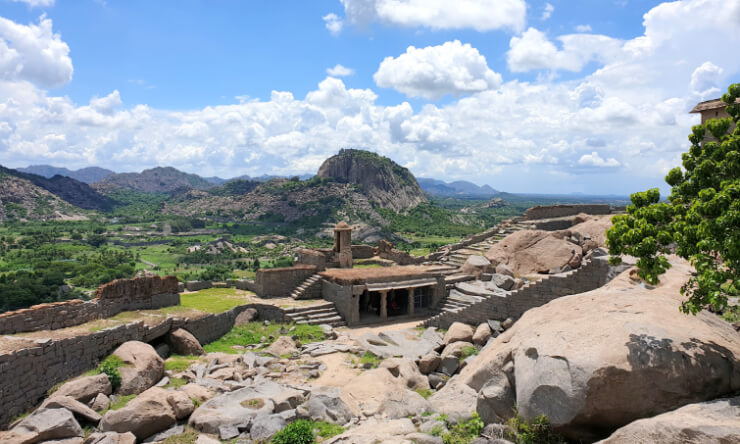
Gingee Fort or Senji Fort is one of the surviving forts in Tamil Nadu. It lies in Villupuram District and is close to the Union Territory of Puducherry. The architecture grandeur of the fort is such that Shivaji, the Maratha king, ranked it as the “most impregnable fortress in India” and it was called the “Troy of the East” by the British. The fort is said to be built by the Chola dynasty during the 9th century AD and was modified by Kurumbar during the 13th century.
Highlight: Kalyana Mahal, Aanaikulam
Other Interesting Blog to Read
Golconda Fort Hyderabad, Telangana
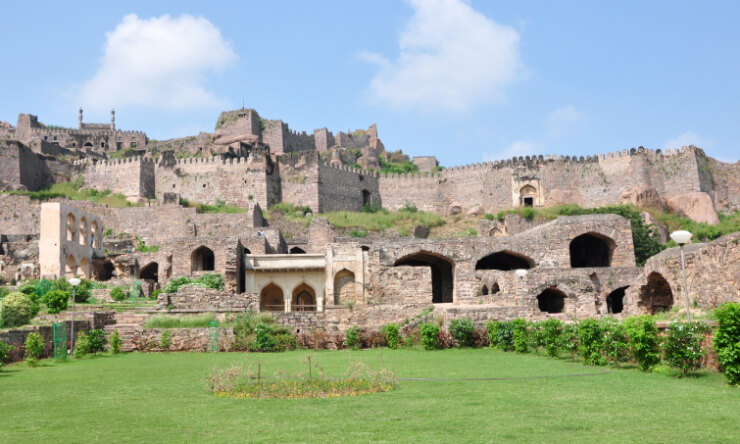
Golconda fort is one of the biggest fortresses in India. Built on a 400 ft. high hill, the fort has three lines of massive fortification walls one within the other and rising to a height of over 12 m. Built in 13th century by the Kakatiya dynasty, initially it was a mud fort.
It was in the 16th century under the Qutb Shahi dynasty it got fortified and also a 7 km long outer wall made of granite was built. Golconda was also a major centre for diamond trade in ancient times during the Qutb Shahi dynasty. It was from here that the biggest diamonds in the world came from including the Kohinoor, Darya-e-noor, Regent ‘n Hope diamonds.
Highlight: A hand clap at a certain point below the dome at the entrance reverberates and can be heard clearly at the Ball Hissar, the highest point almost a kilometer away.
Check out: Complete Andhra Pradesh Travel Guide
Hampi, Karnataka
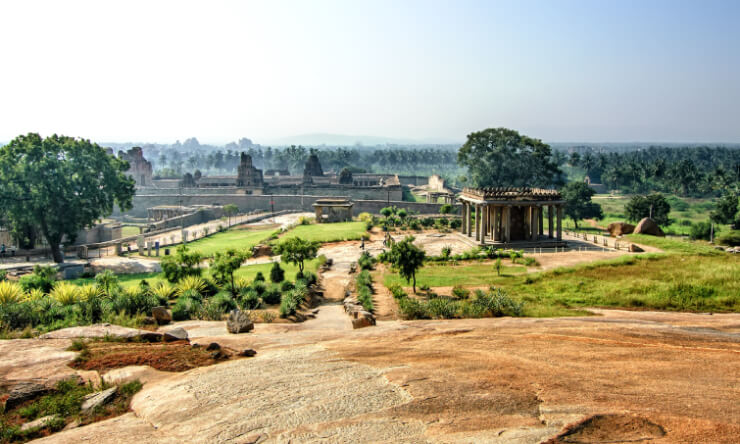
Hampi is one of the UNESCO World Heritage Sites in India located near Hospet town in the Karnataka state. Attracting thousands of visitors every year, this vast stretch ancient remnant is one of its kind of place.
Surrounded by the boulder-strewn hills, Hampi is dotted with 500 plus monuments. Among them are beautiful temples, palaces, aquatic structures, ancient market streets, royal pavilions, bastions, royal platforms and treasury buildings.
Highlight: Virupaksha Temple, Achyuta Raya’s Temple, Hazara Rama Temple
Check out: Karnataka Tourism Packages
Gwalior Fort, Madhya Pradesh
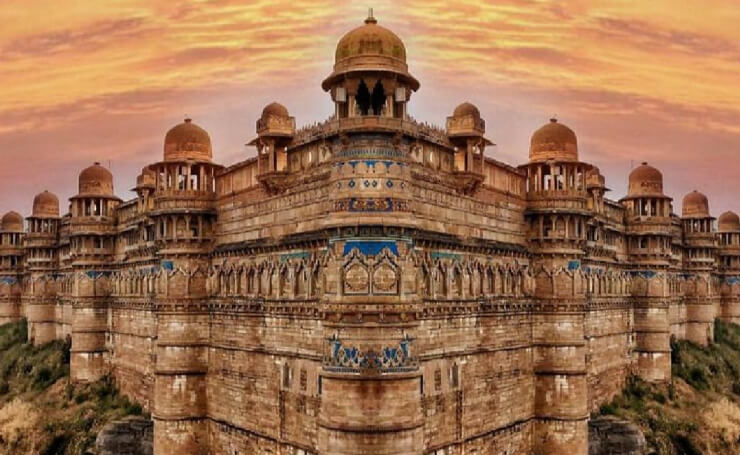
Perched on a steep mass of sandstone, Gwalior Fort dominates the city and is reckoned to be the most magnificent monuments in Gwalior. It has been a scene of memorable events like imprisonments, battles and jauhars.
A steep road winds upwards to the Fort, fringed by statues of Jain Tirthankaras, carved from the rock. The magnificent outer walls of the Fort stand two miles in length and 35 feet high and bear witness of being one of the most invincible forts of India.
Highlight: Gujari Mahal
Also Check out: Gwalior Tourism Guide
Group of Monuments at Pattadakal, Karnataka
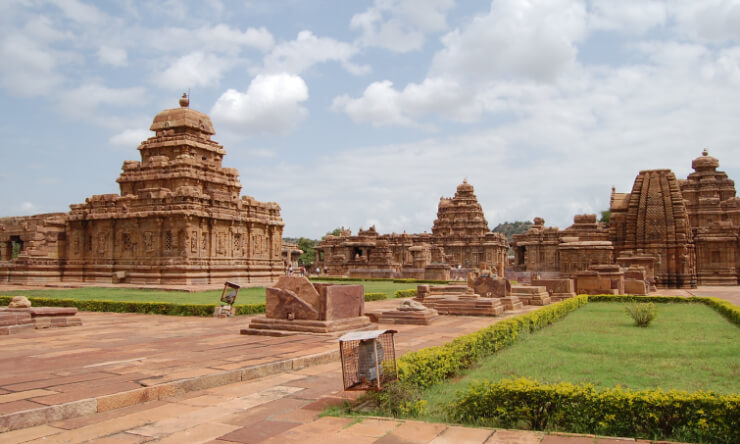
Pattadakal in Karnataka, represents the celebrated art which of 7th and 8th centuries AD under the Chalukya dynasty. The Chalukyas achieved a perfect blend of architectural forms from northern and southern India and built a series of nine Hindu temples, as well as a Jain sanctuary in Pattadakal.
Highlight: Virupaksha Temple
Check out: Information About Religious Tourism in Karnataka
Group of Monuments at Mahabalipuram, Tamil Nadu
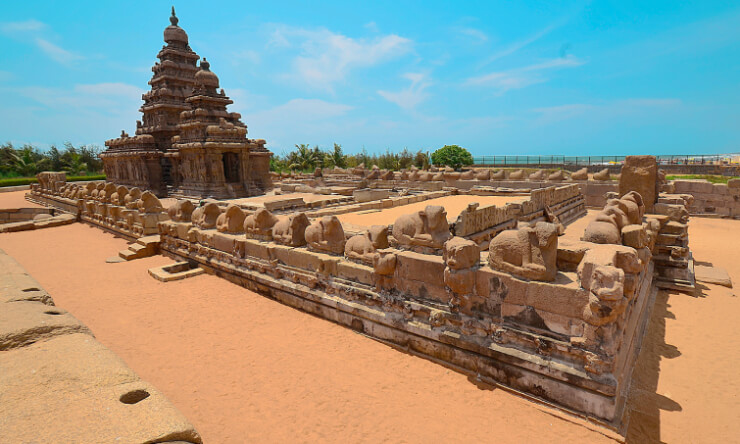
This group of monuments was built by the Pallava kings. The structures here are carved out of rock found on the Coromandel Coast in the 7th and 8th centuries AD.
Mahabalipuram is known especially for its rathas (temples in the form of chariots), mandapas (cave sanctuaries), giant open-air structures such as the famous ‘Descent of the Ganges’, and the temple of Rivage along with thousands of sculptures made to the glorify Shiva.
Highlight: Rathas, Temple of Rivage
Also Read: Heritage Tourism in Tamil Nadu
Hill Palace Museum, Thripunithura, Kerala
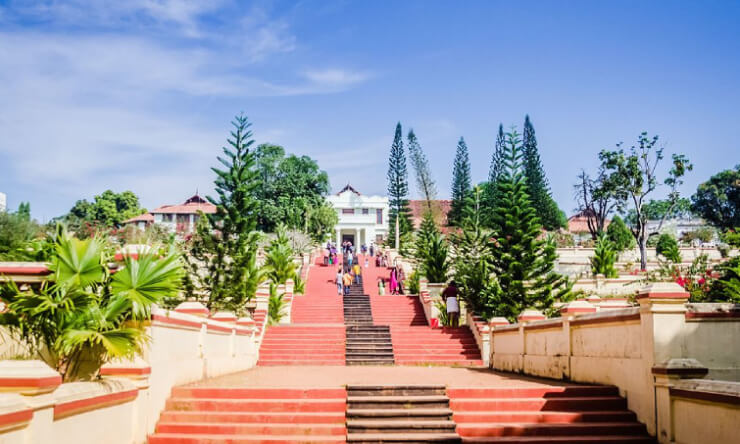
The Hill Palace in Kerala is believed to be the first heritage museum. The palace is famed for housing the royal collections of the erstwhile Maharaja of Kochi. Built in 1865, Hill Palace is today the largest archaeological museum in Kerala. The palace complex consists of 49 buildings in Kerala architectural style.
In addition to the building are the 52 acres sprawling terraced land which houses a deer park and offers facilities for horse riding. Numerous species of flora including rare medicinal plants grow here. One can visit the Ethno-archaeological museum that exhibits oil-paintings, murals, sculptures in stone and manuscripts, inscriptions, coins, belongings of the Kochi royal family and royal furniture including the simhasana (throne).
Highlight: 200 antique pieces of pottery and ceramic vases from Japan and China, Kudakkallu (tomb stone), Thoppikkallu (hood stone), menhirs, granite, laterite memorials, rock-cut weapons from the Stone Age, wooden temple models, plaster cast models of objects from Mohenjodaro and Harappa of the Indus Valley Civilisation.
Also Read: Historical Places in Kerala
Jaisalmer Fort, Rajasthan
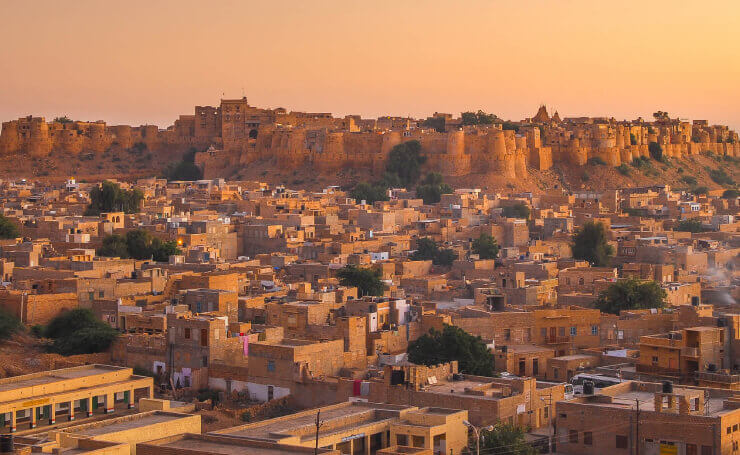
Jaisalmer Fort is a monument worth visiting fort in India. Like various other cities of Rajasthan, in Jaisalmer too you will find different facets of its own glorious heritage and the best that you can find is in Jaisalmer Fort which is still inhabited.
Though you can find historical monuments scattered all over the city, made of sand stone, this fort is one of its kind. When witnessed in the daylight, the fort appears golden and that what attracts the people.
Highlight: Only fort in India that is still inhabited
Check out: Jaisalmer Tour & Travel Guide
Jama Masjid, Delhi
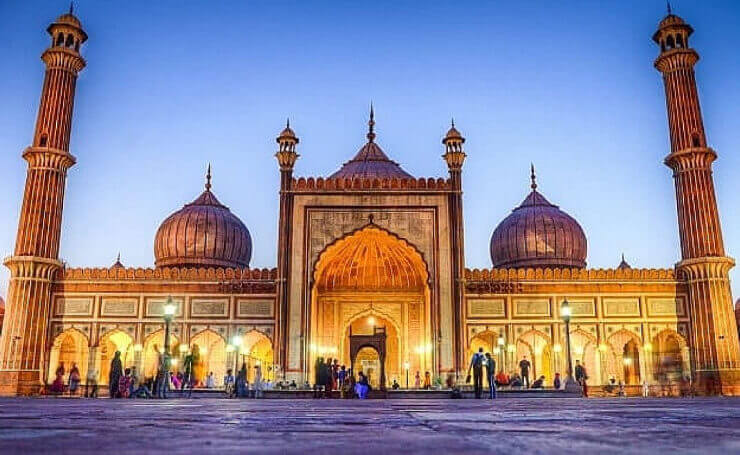
This great mosque of Old Delhi is the largest in India. The mosque has the capacity of holding 25,000 devotees. The construction begun in 1644 and ended as the final architectural extravagance of Shah Jahan, the emperor who built the Taj Mahal and the Red Fort.
Jama Masjid is a decorative mosque, which has three great gates, four towers and two 40 m-high minarets constructed of strips of red sandstone and white marble.
Highlight: View from the Minarets, craftmanship
Other Interesting Blog to Read
Jantar Mantar Jaipur, Rajasthan
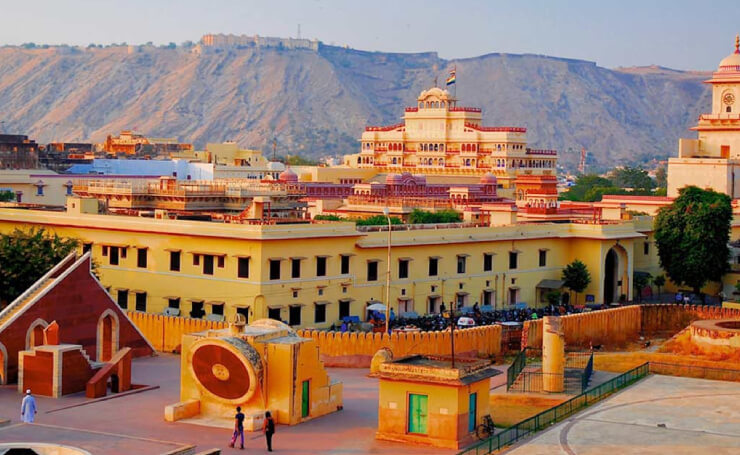
The Jantar Mantar in Jaipur was one of the most precise astronomical instruments of its time. This UNESCO World Heritage Site is so accurate that it is still used today for astronomical observations and calculations and is visited by many tourists.
Built by Raja Jai Singh, the observatory is situated in was constructed between 1728 and 1734. Jai Singh also built similar observatories in Delhi, Ujjain, Varanasi and Mathura.
However, the observatory in Mathura has almost disappeared today. The Jaipur Jantar Mantar remains the largest and best preserved of the five.
Other Interesting Blog to Read
Kamakhya Temple Guwahati, Assam
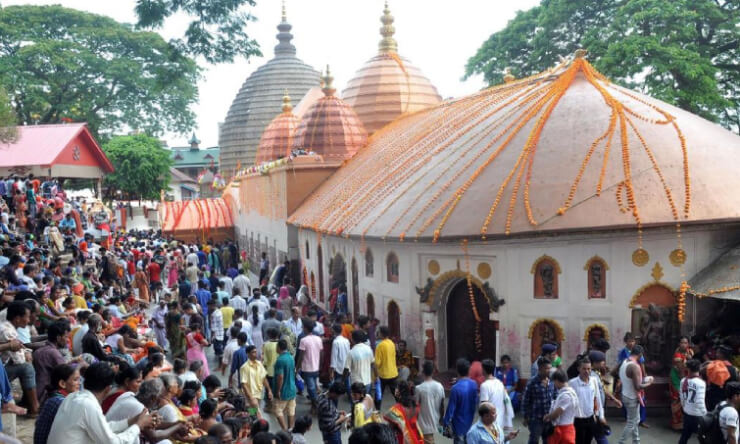
Kamakhya temple is a famous pilgrimage situated at Guwahati, Assam. The temple is located on the Nilachal hill and is dedicated to the tantric goddesses. Apart from the deity Kamakhya Devi, the temple houses 10 other incarnations of Kali.
Kamakhya devi is famous as the bleeding goddess, which means a mythical womb and vagina of Shakti are supposedly installed in the ‘Garvagriha’ or sanctum of the temple.
In the month of Ashaad (June), the goddess is said to menstruates and at this time the Brahmaputra river near Kamakhya turns red. The temple then remains closed for 3 days and holy water is distributed among the devotees of Kamakhya devi.
Highlight: Ambubachi Mela
Also Read: Popular Heritage Sites in Assam
Kashi Vishwanath Varanasi, Uttar Pradesh
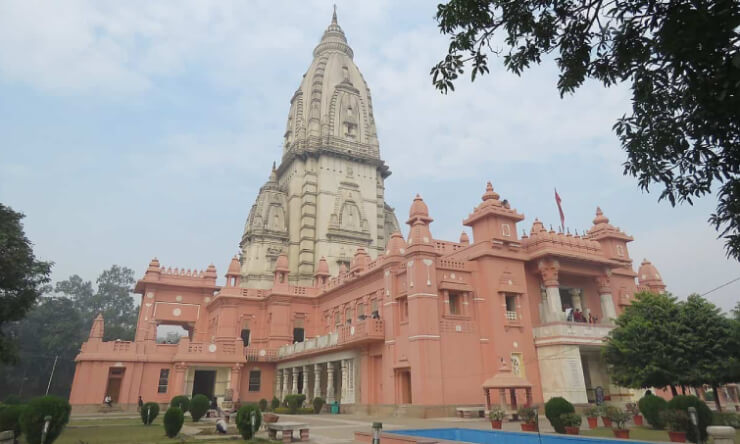
Situated on the western bank of holy river Ganges, Varanasi is believed to be the oldest surviving city in the world. It is in the heart of this city that Kashi Vishwanath Temple exists. One of the Jyotirlinga, this temple teems millions of people to seek spiritual peace and salvation from the entanglements of the world.
Kashi Vishwanath Temple has been an embodiment of Indian culture, tradition and spiritual values. The Temple has been visited by at saints like Adi Shankaracharya, Ramkrishna Paramhansa, Swami Vivekanand, Goswami Tulsidas, Maharshi Dayanand Saraswati, Gurunanak and several other spiritual personalities.
Check out: Popular Tourism Attractions in Varanasi
Key Monastery Spiti Valley, Himachal Pradesh
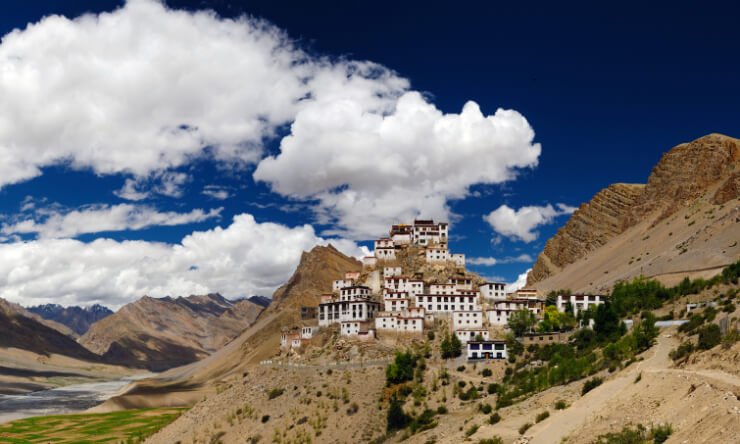
The biggest centre of Buddhist learning in Spiti, Key Monastery is said to be about 1000-year-old. It is the oldest training centre for monks, founded by Dromton, a famous disciple of teacher Atisha in the 11th century AD.
The monastery used to house about 350 monks and was spread over three floors – underground, ground and first floor. Underground was utilized for storage; ground floor was used as assembly hall, called Du-Khang and the ground floor had small rooms for monks.
Highlight: Pasada Style Architecture
Check out: Himachal Tour & Travel Guide
Humayun’s Tomb, New Delhi
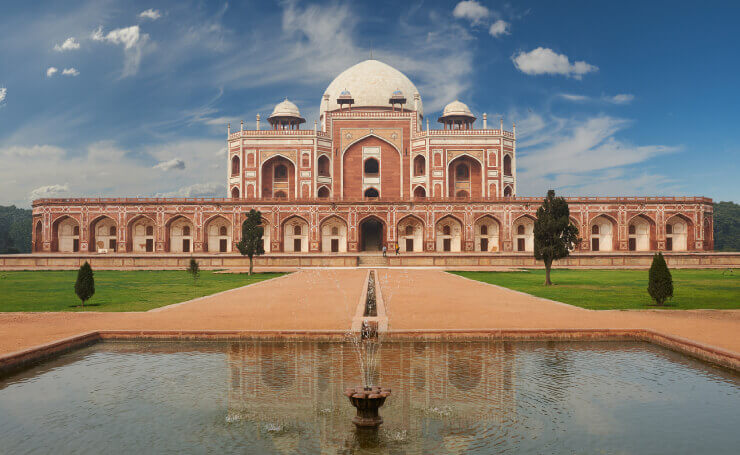
The final resting place of Mughal Emperor Humayun turns out to be a luxurious palace than a tomb. Located in New Dehli, Humayun Tomb is one of the best-preserved Mughal monuments in India.
This mausoleum is also the first and finest example of Mughal architecture in the country. After a century from its construction Humayun’s tomb inspired the construction of the famous Taj Mahal.
Highlight: High Number of Tombs
Also Read: Top Things to Do in Delhi
Mahabodhi Temple Bodhgaya, Bihar
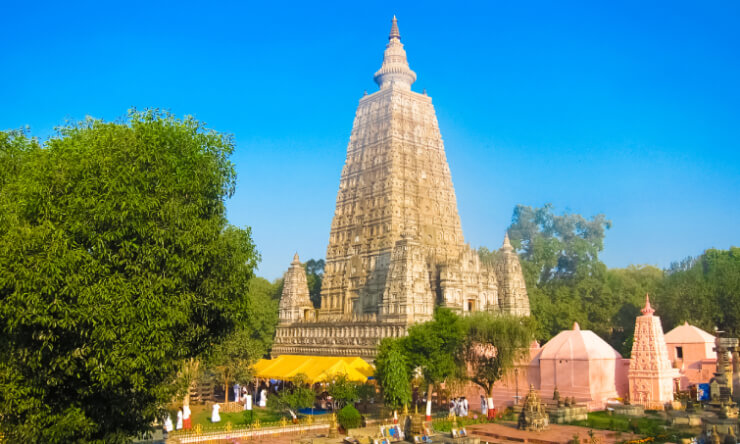
The Mahabodhi Temple Complex is one of the four holy sites that related to the life of the Lord Buddha (particularly to his attainment of Enlightenment and sermons). Mahabodhi is the first temple that was built by Emperor Asoka in the 3rd century B.C. Thus, it is one of the earliest Buddhist temples built entirely by brick.
The temple is recognized by the colossal statue of Buddha seated in the earth-witness mudra. The courtyard of the temple has many stupas and some of them are several hundered years old. The famed Bodhi Tree, where Buddha is said to have attained enlightenment is also found in the premises.
Highlight: Buddha Statue, Bodhi Tree and Jewel Walk
Other Interesting Blog to Read
Mehrangarh Fort Jodhpur, Rajasthan
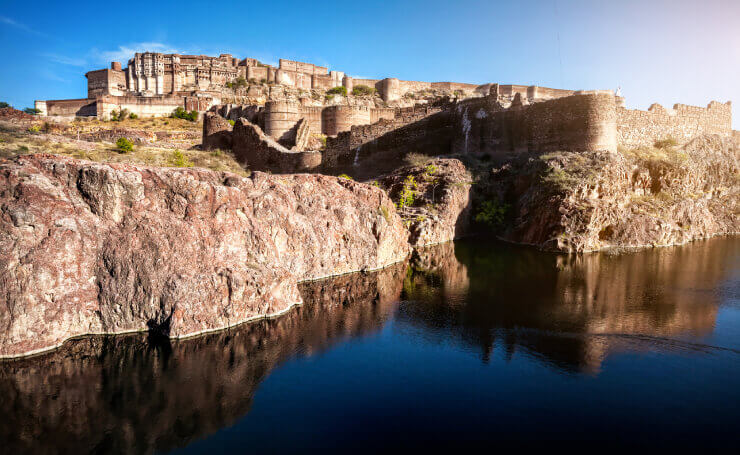
Mehrangarh Fort stands on a perpendicular cliff, four hundred feet above the sky line of Jodhpur, this fort is simply amazing. Built with burnished red sand stone, Mehrangarh Fort is an imposing, invincible and yet a very simple structure that beckon beauty.
The fort is so massive and everything is colossal in size that Rudyard Kipling called it “The Work of Giants”. Today, it is acknowledged as one of the best preserved forts in India.
Highlight: Kilkila Canon, Chamunda Mataji Temple
Check out: Complete Jodhpur Travel Guide
Mysore Palace, Karnataka
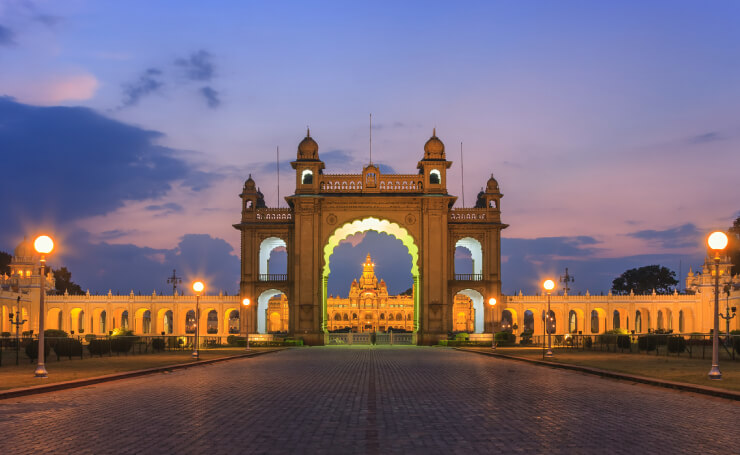
Mysore Palace is one of the most magnificent buildings in South India. It is definitely a sight not to be missed when it is illuminated on Sundays and occasions like Dasara. The interior of the palace is equally exquisite; it has spacious halls, lovely paintings and architectural magnificence.
The palace offers excellent combination of Indo-Saracenic architecture. It was Queen Regent Kempa Nanjammani Vani Vilasa Sannidhana who commissioned famous British architect Henry Irwin to build a palace that would stand as a tribute to the legacy of Mysuru and the Wodeyars.
Check out: Mysore Tourism Guide
Nalanda, Bihar
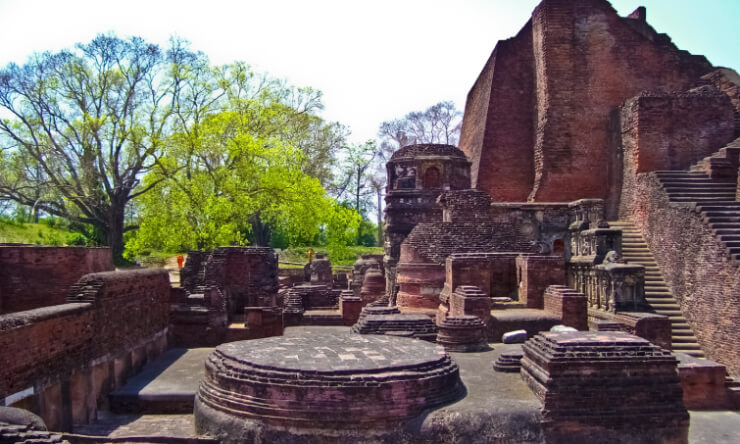
Nalanda is an ancient learning site that was built in the 5th century AD. The ruins of Nalanda, which is reckoned to be one of the world’s most ancient university lies here which is 62 km from Bodhgaya. Though the Buddha visited Nalanda several times during his lifetime, this famous center of Buddhist learning reached fame somewhere around 5th-12th centuries AD.
Famous Chinese traveller Hieun Tsang is also believed to have stayed here in the 7th century AD. He is reckoned to have left detailed description of the excellent education system and purity of monastic life practiced here.
Highlight: Pyramid in Temple No.3, Nava Nalanda Mahavihara and Hieun Tsang Memorial Hall
Check out: Complete Bihar Travel Guide
Purana Qila, New Delhi
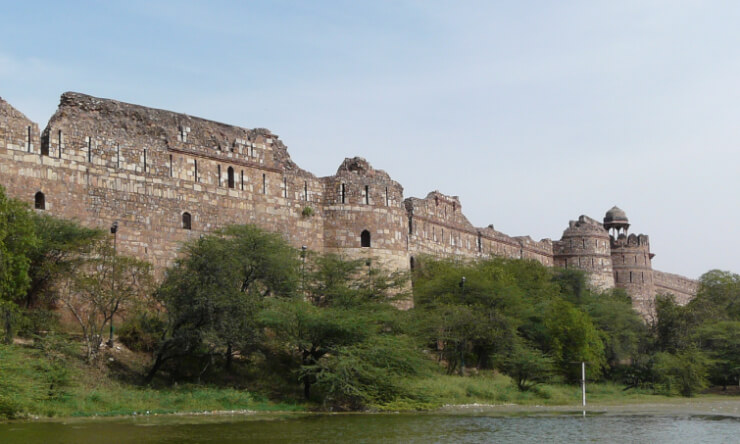
Purana Qila is one the oldest forts in Delhi. Its current form was built by the Afghan king Sher Shah Suri, on a site which was initially called Indraprastha, the capital of the Pandavas. Sher Shah raised the citadel of Purana Qila with an extensive city-area around it. The fort was although completed by his son Islam Shah.
Highlight: Kunti Temple, Lake, Qila -i-Kuhna Mosque, Sher Mandal
Check out: Weekend Getaways around Delhi
Rashtrapati Bhawan, Delhi
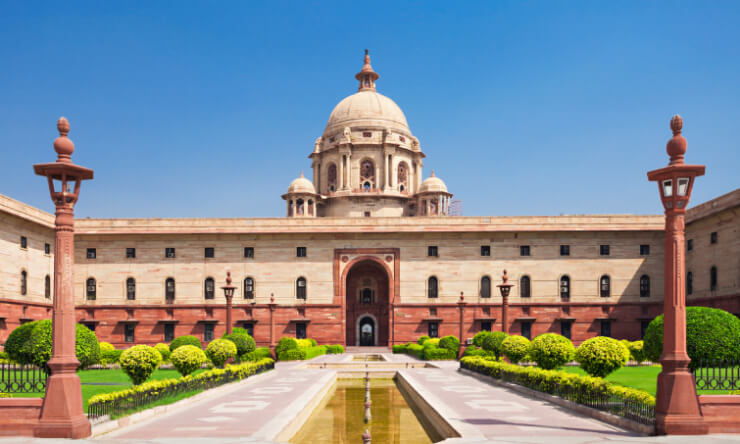
The Rashtrapati Bhavan or President’s House in India has multi-dimensional grandeur. This 340 rooms building has architecture that is simply breathtaking. More than this, it has marked its existence in the records for being the residence of the President of the largest democracy in the world.
It is a fact that quite a few official residential premises of the Head of the State in the world will match the Rashtrapati Bhavan in terms of its size, vastness and its magnificence.
Highlight: Mughal Gardens, Durbar, Baroque style architecture
Also Read: Complete Information About Mughal Garden Delhi
Red Fort, Delhi

The Red Fort was the residence of the Mughal emperor of India for nearly 200 years till 1857. It is located in Delhi and houses a number of museums. In addition of being the accommodation of the emperors and their households, it was the political centre of Mughal government and the setting for events impacting the region.
Constructed in 1648 by the fifth Mughal Emperor Shah Jahan as the palace of his fortified capital Shahjahanabad, the Red Fort is known for its massive enclosing walls of red.
Highlight: Lahori Gate, Delhi Gate, Water Gate, Naubat Khana, Diwan-i-Aam, Nahr-i-Behish, Mumtaz Mahal, Rang Mahal, Khas Mahal, Diwan-i-Khas, Hammam, Baoli, Moti Masjid, Hira Mahal, Shahi Burj, Hayat Bakhsh Bagh
Other Interesting Blog to Read
Rock Shelters of Bhimbetka, Madhya Pradesh
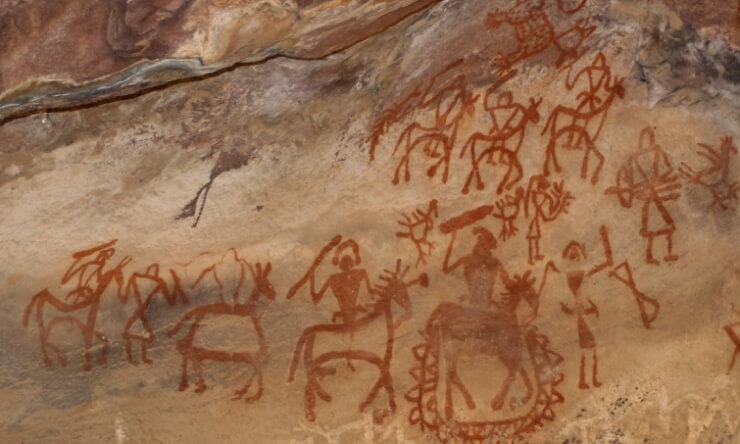
The Bhimbetka rock shelters are an ancient site that traces the earliest human life on the Indian subcontinent, and thus the beginning of the South Asian Stone Age. It is located in the Raisen District in the Indian state of Madhya Pradesh, near Abdullaganj town and inside the Ratapani Wildlife Sanctuary.
It is believed that some of the shelters were inhabited by Homo erectus more than 100,000 years ago. Some of the Stone Age rock paintings found among the Bhimbetka rock shelters are approximately 30,000 years old. The caves also give early evidence of dance.
Highlight: Wall Paintings, Cupolas
Also Read: Heritage Tourism in Madhya Pradesh
Se Cathedral, Goa
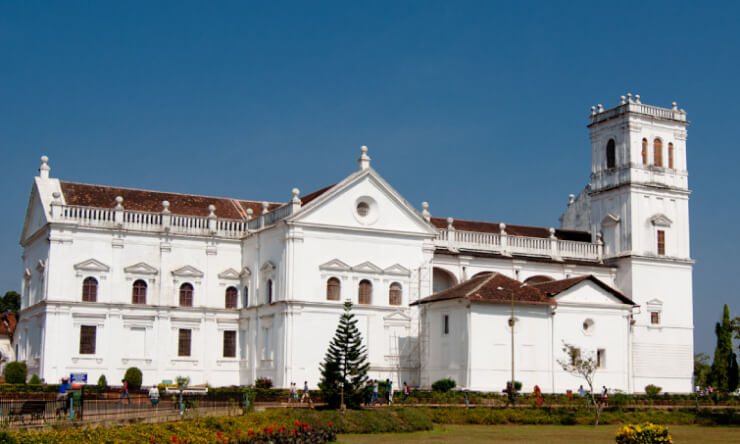
Se Cathedral is located in Old Goa on the banks of the Mandovi River. It is one of the ancient and the largest churches of Asia which is dedicated to Catherine of Alexandria. It is the church of the Latin Rite Catholic Archdiocese of Goa and Daman, and the seat of the Patriarch of the East Indies.
UNESCO marked it as a heritage site and is considered as one of the most sacred places among the Christians. The structural design of the church is classically Portuguese with a Corinthian core and Tuscan peripheral. People from all over the world come to visit this church and to take the blessings of God.
Highlight: Golden Bell, hapels of St. Bernard, St. Anthony, the Miraculous Cross with the Holy Ghost, Nossa Senhora de Necessidades, St. Sebastian, the Blessed Sacrament and Nossa Senhora de Boa Vida.
Other Interesting Blog to Read
Sikandra Agra, Uttar Pradesh
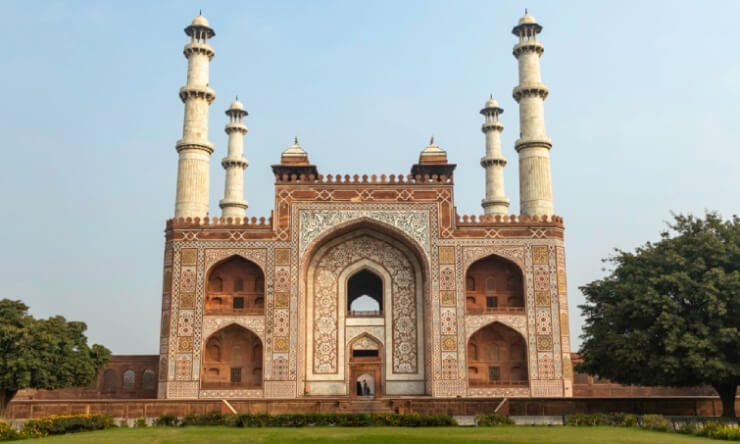
Sikandra is the mausoleum of the great Mughal Emperor Akbar. The Emperor himself started construction of this beautiful monument, which has a perfect blending of Hindu, Christian, Islamic, Buddhist, Jain themes. Sikandra is named after Sikandar Lodi, the Delhi ruler who was in power from 1488 to 1517.
Located in the western periphery of the city; Sikandra is the last resting place of the Mughal emperor who was the heir to a tradition of oriental refinement, a great patron of the arts, literature, philosophy and science.
Highlight: Mosaic and Coloured Stone Work
Other Interesting Blog to Read
Chhatrapati Shivaji Terminus Mumbai, Maharashtra
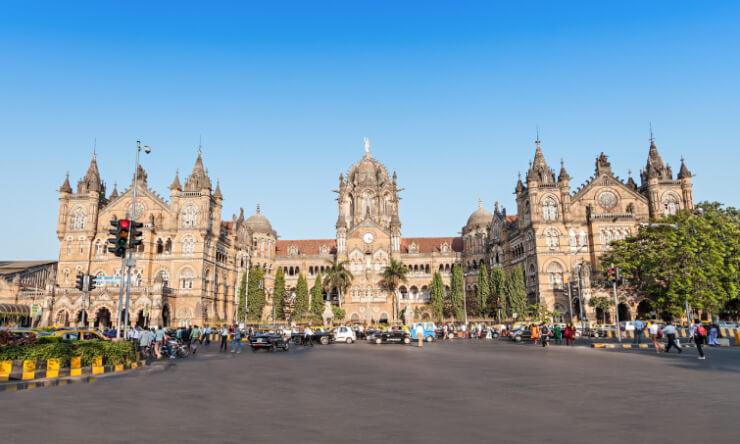
The Chhatrapati Shivaji Terminus or the Victoria Terminus in Mumbai is the best example of Victorian Gothic Revival architecture in India. The structure is a melange of Indian traditional and British architecture.
Designed by British architect F. W. Stevens, the terminus made Mumbai the symbol of ‘Gothic City’ and the major international mercantile port of India. The terminal was built in 1878 and is adorned with stone dome, turrets, pointed arches and eccentric ground plan.
Check out: Complete Maharashtra Travel Guide
Sun Temple Konark, Odisha
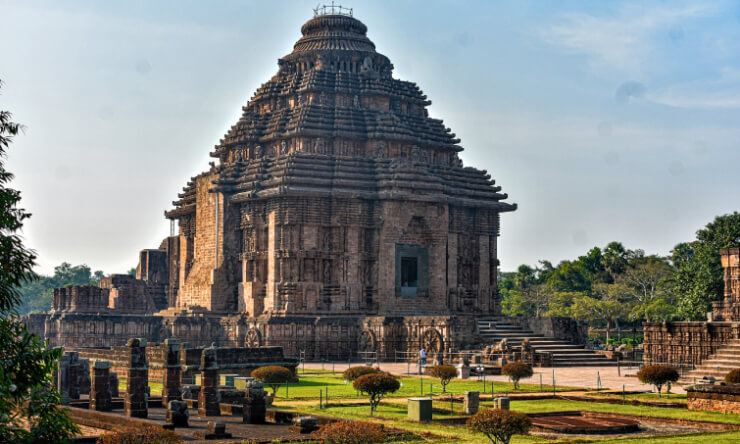
Konark Sun Temple dates back to a 13th-century AD. Believed to have been built by king Narasimhadeva I of Eastern Ganga Dynasty, the temple is in the shape of a gigantic chariot with Khondalite rock wheels, pillars and walls. Unfortunately, a major part of the structure is now in ruins but the majesty of this temple still remains unaffected.
The temple was originally built at the mouth of the river Chandrabhaga in the traditional style of Kalinga architecture. It is meticulously oriented towards the east so that first rays of the sun strike the principal entrance only.
Highlight: Stone Sculptures and Erotic figures
Other Interesting Blog to Read
We hope this blog helped you decide where all to go in India and where to go next. Let us know your view in the comment below, we’d love to hear your suggestion on which place you liked the most or which places should be added to this list.
Also, if you are ready with your decision of what you want to see in India but don’t know how to go about it, just give us a shout at +91-9212777223/24 or drop us an email at info@tourmyindia.com. We would love to help you make your trip in India a memorable one.
Other Important Heritage Tourism Links
Like & Follow our social media accounts at Twitter, Facebook, Linkedin & Instagram for getting the latest updates & offers on holiday packages.
Disclaimer: We do not take credit for some of the licenced paid images used in our blogs, whether from Google Images, Fotolia & Shutterstock. All such images are the copyrights of their respective owners and we try to provide credit for them wherever we can. If, however, any copyright image has been used on our blog, the concerned person can either mail us directly to remove the image or provide credit to whomsoever the image may belong to.
Frequently Asked Questions
Q.Which are the top monuments in India?
Taj Mahal, Gateway of India, India Gate, Hawa Mahal, Red Fort, Golconda Fort, Ajanta Caves, Sun Temple Konark are the top monuments in India.
Q.Which is the most famous monument in India?
Taj Mahal in Agra is the most famous monument in India.
Q.Which city in India has the most number of monuments?
Delhi has the most number of monuments in India.
Q.Which state in India has the greatest number of monuments?
Rajasthan has the greatest number of monuments amongst the Indian states.
Q.What is the best time to visit Taj Mahal in Agra, Uttar Pradesh?
The best time to visit Taj Mahal is between October and April when the weather is quite pleasant.
Q.What is the best time for visiting India for sighting monuments?
The best time to visit India for sighting monuments is between September and April, when the weather is pleasant to stay outdoors for a longer time.
About the author
From the Lake District, Nainital, Nidhi Singh is a travel writer whose love for mountains can be seen in her write ups. Talk about solo travelling, indulging in adventure activities, binging on good food, planning budget trips or the Aurora Borealis and you will get all her attention. It is the wanderlust that keeps her going and if at all she could get one wish granted she would love to live a life less ordinary. Follow her on Twitter, Facebook & Instagram.

 +91-9212777225
+91-9212777225 Plan Your trip
Plan Your trip
















































